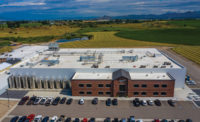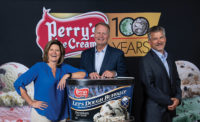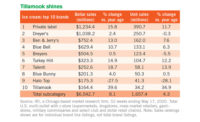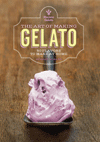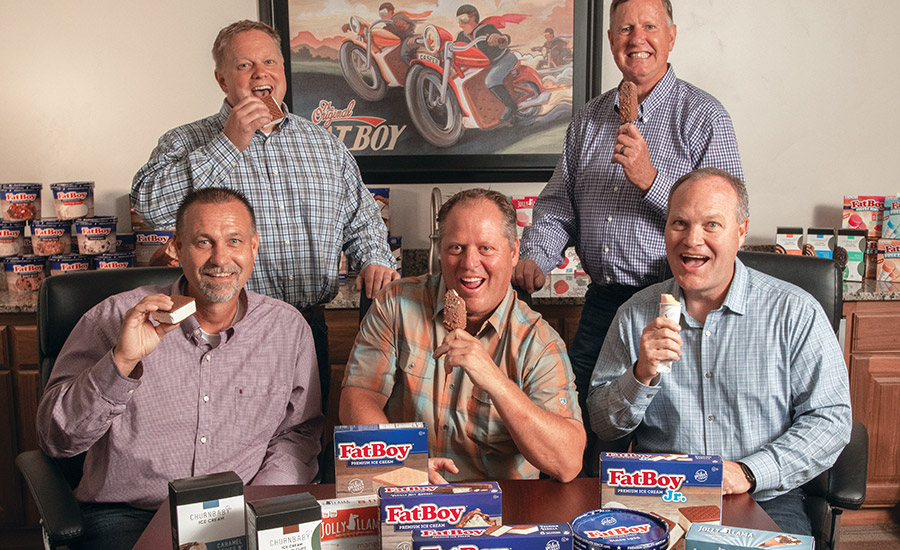Casper’s Ice Cream is 95 years old and growing strong
Family-owned Casper’s Ice Cream is counting on its product quality, differentiated brands and nimble but measured approach to see it through another 95 years.












Casper Merrill did not invent the frozen novelty. Christian Kent Nelson — a high school teacher who lived in Iowa — is credited with that achievement, creating a stickless product dubbed the “I Scream Bar” in 1920. (In 1921, it was reborn as what everyone knows as the Eskimo Pie, when he partnered with chocolate producer Russell C. Stover to produce and market the bar).
But Casper*, who studied dairy science in college, did take the ice cream novelty to a new level of decadence just five years later, when he invented the Casco Nut Sundae — essentially an ice cream sundae on a stick. It was his attempt to squeeze more money out of the milk produced on his father’s small dairy farm in Utah. His creation laid the groundwork for what would become Casper’s Ice Cream, a Richmond, Utah-based family-run company best known for its FatBoy frozen novelty and ice cream brand.
“He made those first ice creams using ice blocks and a brine solution,” says Paul Merrill, CEO of the company and one of Casper’s grandchildren. “Then he’d have to hurry and put those personal sundaes on sticks that he made into a milk can, load them onto a wagon and go sell them at local Fourth of July celebrations, county fairs and the different gatherings in the community out in Northern Utah and Southern Idaho.”
His grandfather was quite the inventor as well, Merrill adds, making all of this own equipment. That equipment included the company’s first batch freezers.
Eventually, Casper learned how to make continuous freezers, which allowed him to produce ice cream even faster, he noted. In the 1940s and 1950s, people outside the company were actually asking him to make freezers for them.
“He never really bought any commercial equipment,” Merrill says. “The second generation started to do that — my father.”
Subsequent generations go for growth
Casper was a remarkable inventor and ice cream-maker. However, having steered the business through the Great Depression, he had “very much a slow-growth mindset,” Merrill points out. By the 1970s, the company was operating a small plant in Logan, Utah, and had “maxed out” in terms of revenue, at just shy of $1 million annually.
Around that time, the second generation envisioned the potential for much greater growth: Casper’s sons George, Richard and Merrill’s father, Derwin — a civil engineer by trade who took it upon himself to study accounting and ice cream production. Derwin returned to the business to begin that growth effort by automating where possible and buying box-making and other modern equipment.
“Through the late 70s, 80s and 90s, my father grew the company substantially,” Merrill says.
During that time span, George ran the distribution, while Richard ran the plant with Derwin.
“I kind of got involved at a young age working under my grandpa and my dad, and it became apparent to me that we needed to start marketing, Merrill notes.”
After he graduated from Utah State University, Merrill helped his father do just that. And in 2003, he took over the CEO reins. Under his leadership, the company built and opened its current state-of-the-art Richmond plant (in 2015) to keep up with the substantial growth it was experiencing.
“Coming into the 2000s, we were a $5 to $10 million company,” Merrill says. “We’re approaching 10 times that size in the last 20 years.”
Three differentiated brands
Today, Casper’s Ice Cream offers frozen novelties and ice cream under three brands: FatBoy, Jolly Llama and the newly launched ChurnBaby brand. It also serves as a contract manufacturer for retailers and other brands. A varying selection of the company’s products is available in all 50 states across all major retails channels, although supermarkets account for approximately 60% of total business, says John Fabert, vice president of sales and marketing.
The FatBoy brand is the oldest and largest of the three brands, notes Kyle Smith, president of the company. In addition to the original ice cream sundae bars (rebranded years ago from Casco Nut Sundaes and available in several varieties), the brand covers novelties (aptly branded outsized ice cream sandwiches, “junior-size” ice cream sandwiches, ice cream cones and squeeze tubes) and 56-ounce ice cream tubs. The FatBoy Vanilla ice cream sandwich continues to be the most popular item in the brand’s approximately 35-SKU lineup.
The FatBoy brand’s target consumers, Fabert notes, are the all-American family and ice cream lovers in general. FatBoy is all about life’s celebrations and gatherings, as well as snack time at home.
“So it’s a very family-oriented brand,” he stresses.
The Jolly Llama brand, meanwhile, covers a line of dairy-free, gluten-free and GMO-free novelties. The offerings are predominantly cones, sandwiches and sorbet pops, Smith explains.
“We’ve had a lot of excitement about the Jolly Llama cones, being they’re a plant-based, dairy-free, gluten-free product,” he adds.
That brand’s consumers include those with dietary restrictions, whether by choice or medical necessity, Fabert explains.
As for ChurnBaby, the boutique brand made its debut this past spring. It covers a line of Cookie Cups (cups of super-premium ice cream, topped with a full cookie, that come with a spoon on the inside of the lid for on-the-go snacking), ice cream sandwiches and more. Smith notes that the Caramel Cashew sandwich appears to be an early consumer favorite among the brand’s lineup.
“ChurnBaby lovers are looking for the experiential side of ice cream,” Fabert explains. “With boutique ice cream shops gaining more popularity, ChurnBaby consumers look to bring the personal and super-premium boutique experience to home.”
New products are in the works for the brands, too. Two planned items are a Sugar Cookie sandwich and an Old-Fashioned Vanilla sandwich under the FatBoy brand, Smith says. In addition, Casper’s Ice Cream is developing “really innovative and decadent” stick bars that will launch under the ChurnBaby brand in 2021.
Speaking of the ChurnBaby brand, it will have a relaunch of sorts next year, too. Its 2020 launch coincided with the onset of the COVID-19 pandemic; many retail buyers that initially accepted it, therefore, redirected their plans as they sought to trim SKUs, Fabert points out.
An always-evolving process
New product development is critical, of course, to most companies’ success, and Casper’s Ice Cream is no exception. The company has a formal written process that guides efforts here, but it is a working document that is “always evolving,” Shane Peterson, vice president, explains.
“We include our management team, our vendors, our customers,” he says. “We listen to them fairly heavily, and we look at data [to get a picture] of the market.”
The first step, post research, for product development team members is to determine what product will resonate best with the target consumers, Peterson notes. They then decide what form the identified product will take in terms of stick, sandwich, cup, etc.
“And the best part of that whole deal is when we sit down as a team and we evaluate everything we’ve made and say, ‘This is a winner and this is a winner. I don’t know if this is a winner,’” he says. “Even before, that, we usually go to a focus group or two to see what they like, because obviously everybody’s got an opinion, and everybody is a consumer of ice cream of some sort.”
When all is said and done, the team homes in on a few winning concepts, makes sure they look appealing and fit specific buyer criteria, and then does what it can to get them in front of buyers, Peterson says.
“We try to take it from concept to shelf in a fairly short time,” he adds. “We like to pride ourselves on being nimble.”
If what the team presents to buyers fails to “hit on all the cylinders,” the team asks those buyers what needs to be changed, Peterson notes.
“We have come up with concepts fairly quickly from their recommendations; we’ve been able to pull something off in three, four months,” he points out.
Whether they go forward or ultimately are scrapped, all of the concepts have one big positive in common: the highest quality.
“Our FatBoy products, they’re thick and creamy,” explains Keith Lawes, vice president and corporate secretary. “Our products are larger than a lot of the competition. And our vat pasteurization process is very unique.”
Although many ice cream processors have moved to high-temperature short-time pasteurization, Casper’s Ice Cream has stayed true to the vat pasteurization process throughout its entire 95-year history, he notes.
“We feel like it gives it a unique flavor and a creamy, smooth texture that our customers love,” Lawes says.
Getting the word out
Casper’s Ice Cream’s impressive growth over the past couple of decades can be attributed to more than on-trend high-quality products. Marketing efforts also have paid off.
For new products, the company provides advertising, coupons and other tools retailers need to be successful and effective, Fabert notes. Demos are an important part of the toolbox.
“Getting the customer to taste our product is probably the first step to building a loyal customer for years to come,” he says.
The company also tailors its marketing efforts to each retailer in each region of the country, based on their needs and the products they carry, Fabert notes.
“One size doesn’t fit all, and we’re able to adapt by being the company we are and having the willingness to make those changes, to make it work for each of our markets,” he says.
To reach consumers, Casper’s Ice Cream relies on traditional billboard, TV and magazine advertising for some demographics. It also takes advantage of social media, Smith says.
“We actually use social media very heavily,” adds Joaby Parker, the company’s marketing manager. “We pretty much use every channel on social media — the newest one we’ve been [using] is TikTok.”
Within the social media universe, Casper’s Ice Cream’s goals are to drive product trial and retain customers. The company relies on original content the marketing team creates, as well as on hundreds of influencers who drive content through photography, video, product use and product testing, Parker explains.
Events play a large role in getting the word out, too. Casper’s Ice Cream has a team of about a dozen individuals who go out in pairs May through October — all over the country, but especially in the Western states — to represent the company at festivals, marathons, races, store openings and other events, Parker says.
“They’re our summer tour team, and they take a big FatBoy-branded van … and go all over the country,” he adds. “They hand out samples like crazy and set up booths with games out of them and things like that. That gives us another opportunity to get people [to try] our products, and we do that obviously strategically in areas where we know our product is being sold.”
Service-minded
People and community are just as important as — or maybe even more important than — products to Casper’s Ice Cream. That reality is reflected in the company’s commitment to service leadership.
“We’re all about serving — not only serving our communities, but serving each other within the business,” Lawes states. “Nobody’s above any job. We’re all willing to get in and do whatever it takes to get things done.”
To show appreciation for its employees, the company’s management team cooks lunch for them once a month. Moreover, Casper’s Ice Cream, in turn, encourages its employees to show appreciation for the community in which they work and live via service projects such as tree planting, Smith says.
“I think it’s important, as a management team, to get employees out of the factory, shut the factory down for a day and go serve in the community where your employees live,” he maintains. “And it gives them a sense of pride in just giving back.”
Casper’s Ice Cream also works with the local food banks, donating products every two weeks, Lawes points out.
To take its service leadership a step further, Casper’s Ice Cream launched its Casper’s Cares initiative this year. As part of the initiative, the company partnered with New York’s Stephen Siller Tunnels to Towers Foundation, which serves wounded veterans and families of veterans who lost their lives, Smith notes. One particular story coming out of the foundation really hit home for the company.
“A community that’s only an hour away lost their mayor in Afghanistan last year,” he says. “And he had an amazing little family — a wife and a few kids. And Tunnel to Towers came in and paid off their mortgage so that the family doesn’t have financial worry for things like that.”
In July, the foundation set up a new home for a veteran in Utah, and Casper’s Ice Cream provided, among other things, a brand-new freezer stocked with ice cream products for the home, Smith noted.
“We’re excited about where that partnership can go over the next 10, 20 years,” he adds.
Gearing up for (more) growth
Looking ahead to the next five years, Casper’s Ice Cream is not necessarily looking to double its business, but it does plan to grow substantially.
“We plan to build out our brand blocks within our brands to be able to give an assortment in the frozen category across all of the brands,” Smith says.
To do so successfully, the company will need to address some challenges along the way. Staying relevant with the consumer is the greatest of those challenges, Lawes stresses.
“Every year, there are dozens of items that get introduced into that freezer space, which is really the most expensive real estate within the grocery store,” he says. “So you’ve got to be on your game. You’ve got to be producing and introducing products that are going to hold your space on the shelves through their volume in sales.
“But being family owned, we’re nimble,” Lawes adds. “We can react quickly and get the products to retailers and consumers that they’re demanding.”
Additional plant improvements are in the works to support growth, too. For example, the company scheduled a couple automation projects — one for the stick line and one for robotic palletizing in the warehouse. More cold storage also is part of the plan.
A steady approach will continue to be critical, too, Merrill says. Casper’s Ice Cream knows that it does not make sense to chase every trend in the market.
“We kind of sit back and take a measured approach so that we’re not getting whipped — you know, that we’re not creating whiplash for the management teams,” he explains. “We’ve been around for 95 years. I’d like the company and brands to be here 95 years from now.”
*First name only used on second and subsequent references to differentiate from Paul Merrill.
Looking for a reprint of this article?
From high-res PDFs to custom plaques, order your copy today!




